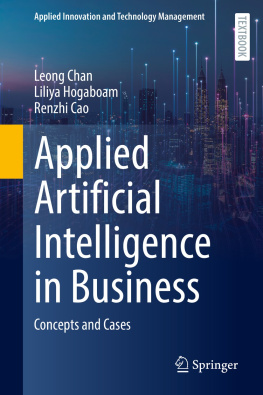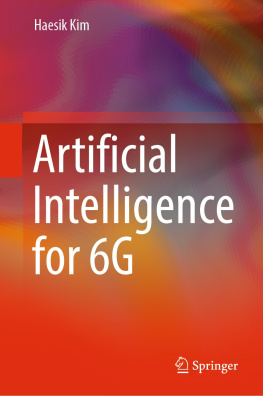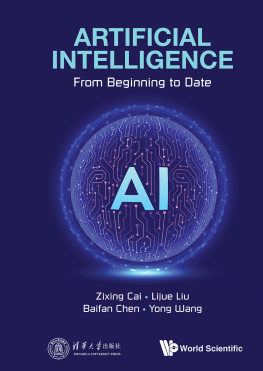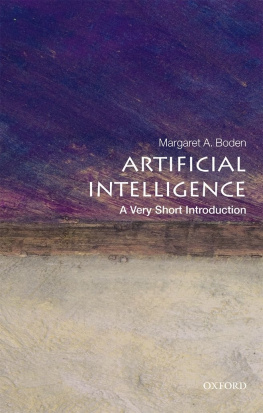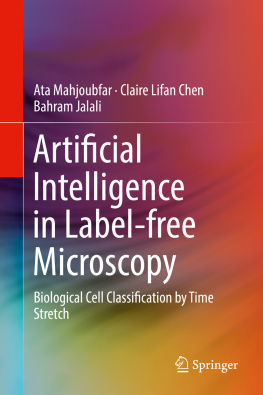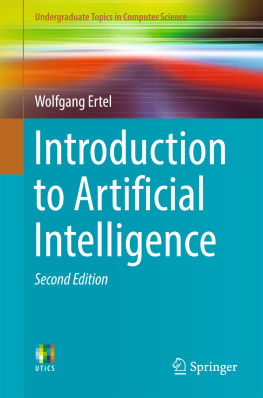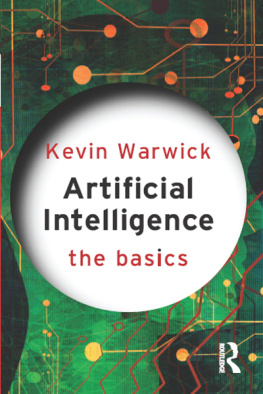Chen Robert H. - Artificial Intelligence : An Introduction for the Inquisitive Reader
Here you can read online Chen Robert H. - Artificial Intelligence : An Introduction for the Inquisitive Reader full text of the book (entire story) in english for free. Download pdf and epub, get meaning, cover and reviews about this ebook. year: 2022, publisher: CRC Press LLC, genre: Romance novel. Description of the work, (preface) as well as reviews are available. Best literature library LitArk.com created for fans of good reading and offers a wide selection of genres:
Romance novel
Science fiction
Adventure
Detective
Science
History
Home and family
Prose
Art
Politics
Computer
Non-fiction
Religion
Business
Children
Humor
Choose a favorite category and find really read worthwhile books. Enjoy immersion in the world of imagination, feel the emotions of the characters or learn something new for yourself, make an fascinating discovery.

- Book:Artificial Intelligence : An Introduction for the Inquisitive Reader
- Author:
- Publisher:CRC Press LLC
- Genre:
- Year:2022
- Rating:4 / 5
- Favourites:Add to favourites
- Your mark:
- 80
- 1
- 2
- 3
- 4
- 5
Artificial Intelligence : An Introduction for the Inquisitive Reader: summary, description and annotation
We offer to read an annotation, description, summary or preface (depends on what the author of the book "Artificial Intelligence : An Introduction for the Inquisitive Reader" wrote himself). If you haven't found the necessary information about the book — write in the comments, we will try to find it.
Chen Robert H.: author's other books
Who wrote Artificial Intelligence : An Introduction for the Inquisitive Reader? Find out the surname, the name of the author of the book and a list of all author's works by series.
Artificial Intelligence : An Introduction for the Inquisitive Reader — read online for free the complete book (whole text) full work
Below is the text of the book, divided by pages. System saving the place of the last page read, allows you to conveniently read the book "Artificial Intelligence : An Introduction for the Inquisitive Reader" online for free, without having to search again every time where you left off. Put a bookmark, and you can go to the page where you finished reading at any time.
Font size:
Interval:
Bookmark:
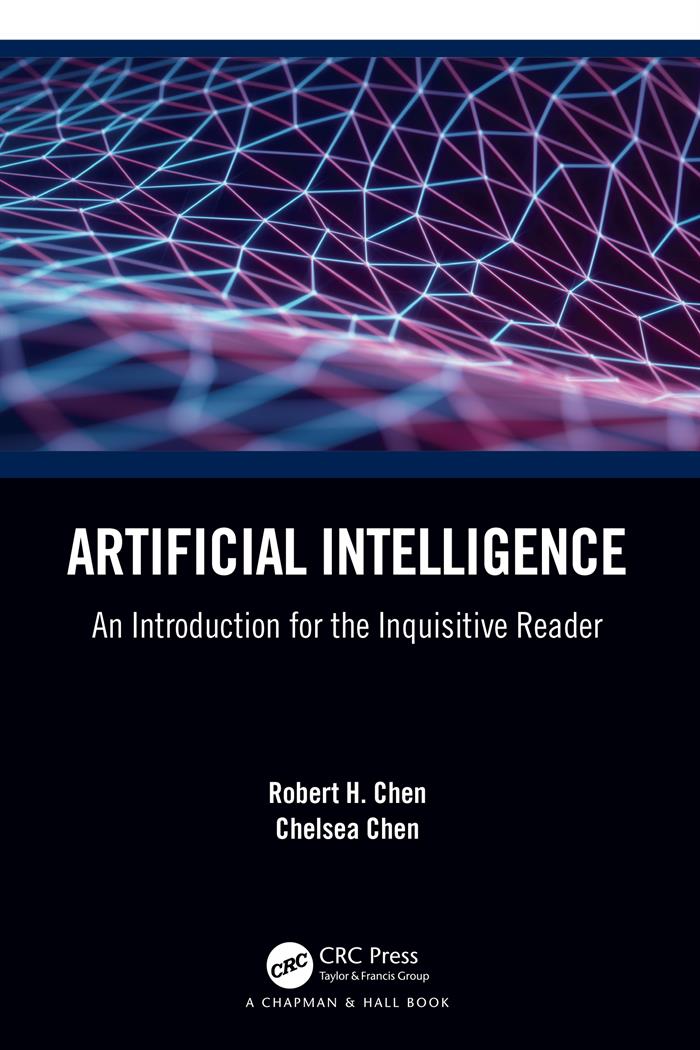
Robert H. Chen
Chelsea Chen

First edition published 2022
by CRC Press
6000 Broken Sound Parkway NW, Suite 300, Boca Raton, FL 33487-2742
and by CRC Press
4 Park Square, Milton Park, Abingdon, Oxon, OX14 4RN
2022 Robert H. Chen and Chelsea Chen
CRC Press is an imprint of Taylor & Francis Group, LLC
Reasonable efforts have been made to publish reliable data and information, but the author and publisher cannot assume responsibility for the validity of all materials or the consequences of their use. The authors and publishers have attempted to trace the copyright holders of all material reproduced in this publication and apologize to copyright holders if permission to publish in this form has not been obtained. If any copyright material has not been acknowledged please write and let us know so we may rectify in any future reprint.
Except as permitted under US Copyright Law, no part of this book may be reprinted, reproduced, transmitted, or utilized in any form by any electronic, mechanical, or other means, now known or hereafter invented, including photocopying, microfilming, and recording, or in any information storage or retrieval system, without written permission from the publishers.
For permission to photocopy or use material electronically from this work, access
Trademark notice: Product or corporate names may be trademarks or registered trademarks and are used only for identification and explanation without intent to infringe.
Library of Congress Cataloguing-in-Publication Data
Names: Chen, Robert H., 1947- author. | Chen, Chelsea, author.
Title: Artificial intelligence : an introduction for the inquisitive reader / authored by Robert H. Chen, Chelsea Chen.
Description: Boca Raton : CRC Press, 2022. | Includes bibliographical references and index.
Identifiers: LCCN 2021055530 (print) | LCCN 2021055531 (ebook) | ISBN 9781032103471 (hardback) | ISBN 9781032101842 (paperback) | ISBN 9781003214892 (ebook)
Subjects: LCSH: Artificial intelligence.
Classification: LCC Q335 .C4845 2022 (print) | LCC Q335 (ebook) | DDC 006.3--dc23/eng/20211116
LC record available at https://lccn.loc.gov/2021055530
LC ebook record available at https://lccn.loc.gov/2021055531
ISBN: 978-1-032-10347-1 (hbk)
ISBN: 978-1-032-10184-2 (pbk)
ISBN: 978-1-003-21489-2 (ebk)
DOI: 10.1201/9781003214892
Typeset in Minion
by MPS Limited, Dehradun
I N THIS BOOK, THE ADVENTURES IN THE QUEST FOR artificial intelligence (AI) are exemplified by the entertaining demonstrations of man versus machine competitions such as IBM Deep Blue versus Garry Kasparov and Google AlphaGo versus Lee Sedol, but the real significance of AI evolves from the human ideas behind the machines algorithms and what the machine may be capable of in the future. Starting with mechanical calculation, the development of artificial intelligence can be seen as a natural progression of technology abetted by the generation of computer science. With the hardware, software, and communications in hand, the quest for the long-dreamed of expert system began in earnest with the pure logic-based top-down machine where axioms go in and mathematical theorems come out, but because of the inherent contradictions in pure logic and lack of data and computer power, the Logic Theorist was replaced by Big Data and massively parallel processing machines, in the so-called bottom-up approach.
Bottom-up AI mimics the structure and pattern recognition capability of human brains with electrically activated artificial neurons forming synaptic patterns of recognition and thought in an artificial neural network formed in a parallel-processing computer. The synaptic patterns are produced by Markov chain modeling of neuron activation with the neurons weighted in accord with a training set in a process called parameterization. The gradient descent of vector calculus minimizes the difference between the machine patterns and the ground truth, backpropagating the differences using the chain rule of calculus provides the machine learning, and hyperparameterization fine-tunes the accuracy and computational efficiency of the machines thinking process.
The example of convolutional neural network used in computer vision armed with Big Data and massively parallel processing has brought machine vision into almost every facet of industry and society.
Predictive analytics AI is employed almost everywhere, especially critically in business, science, politics, and the military. AI reinforcement learning has produced machines that can best the top human video gamers without even a priori knowing the rules of the games being played, and in the real world of imperfect knowledge, AI systems have beaten the best in Texas Holdem poker competition.
Because of the ambiguities and vagaries of speech, natural language processing using generative recurrent neural networks that can assess immediate speech in terms of what was spoken or inferred before are presently the most promising approaches.
The basic ideas behind the implementing algorithms and the processes enabling a machine to learn are described within the theme of the difference between human and artificial intelligence, with the touchstone question being the capability of machines to do mathematics.
That ability required by the reader, however, is only basic calculus, and explanations of the particular equations for artificial intelligence algorithms are provided with examples so that for those who have never learned, or have long forgotten their calculus, the ideas behind the algorithms can be easily understood, hopefully kindling an appreciation of the role of mathematics in artificial intelligence.
As for form, some methods of mathematical exposition, for example the boldface representations of vectors, and curly letter matrices are employed only when necessary for clarity, as their identities are evident from the context. Wording and spelling are in the American style but with British punctuation leaving quotes and parentheses inside sentences of which they are only a part, at the dreadful consequence of laying bare the period or comma.
Only the designs of the algorithms are presented, for those wishing to know the code, referrals are made to the relevant articles, and free code hosting platforms and excellent online programming tutorials offer great convenience and hands-on coding experience.
The authors would like to thank Callum Fraser of Taylor & Francis Publishing for professional guidance, to Mansi Kabra for expert handling of the manuscript, and the reviewers of the manuscript who provided excellent critical suggestions.
DOI: 10.1201/9781003214892-2
H e was a man with two common first names, Arthur Samuel, born and raised in mid-America Emporia Kansas in a middle-class family, a graduate of the local College of Emporia, he appeared to be an ordinary young man brought up in a traditional American society. However, the genial but inherently cautious Arthur Samuel was soon to known as a man of great distinction in an unusual new realm. For from Emporia, his special talents allowed him to enter the citadel of engineering education MIT which provided him a sound electrical engineering basis, and thence to the fount of technical innovation AT&T Bell Labs where he worked on the telecommunications systems that transformed the whole world, and the radar technology critical to victory in World War II.
Font size:
Interval:
Bookmark:
Similar books «Artificial Intelligence : An Introduction for the Inquisitive Reader»
Look at similar books to Artificial Intelligence : An Introduction for the Inquisitive Reader. We have selected literature similar in name and meaning in the hope of providing readers with more options to find new, interesting, not yet read works.
Discussion, reviews of the book Artificial Intelligence : An Introduction for the Inquisitive Reader and just readers' own opinions. Leave your comments, write what you think about the work, its meaning or the main characters. Specify what exactly you liked and what you didn't like, and why you think so.


